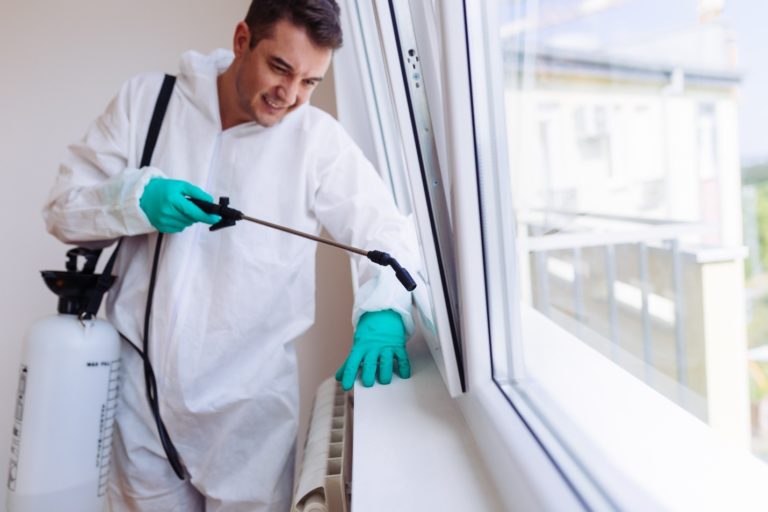What Is the Government’s Role in Termite Control?

You might be surprised to learn there are several different government agencies that play an active role in termite control, termite research, and termite extermination. These agencies include:
S. Environmental Protection Agency (EPA)
S. Department of Housing and Urban Development (HUD)
S. Forest Service
S. Department of Agriculture (USDA)
Centers for Disease Control (CDC)
California Environmental Protection Agency (CEPA)
California Agricultural Commissioners
Each of the different agencies has its own specific roles and functions, while also working together on efforts to control termites through research and public education.
Please Note: If you live outside of California, your state will have its own agencies that can be involved with termite control. The agencies can be called the Department of Natural Resources, Department of Quality, Department of Environmental Protection, or some other similar name.
What Is the EPA’s Role in Termite Control?
The EPA’s role is to provide education about termites, including how to identify different species, what termite signs to look for to determine infestations, and how to control them. The EPA also provides information about different types of treatments for termites one might use, from non-chemical to chemical options.
Additionally, the EPA is responsible for regulating the various pesticides and chemicals used for termite extermination. The EPA verifies the treatments meet the current federal safety standards that protect the environment and health of humans.
Other responsibilities the EPA has in regards to termites include:1
Encouraging termite prevention efforts.
Setting standards for the registration and use of termite control products.
Serving as a primary source for information about pesticides and non-pesticide treatments for state and local government agencies, news media, and the general public.
What Is HUD’s Role in Termite Control?
HUD’s role in termite control has to do with the regulation of termite inspections during the sale of properties. Their primary concern is to help protect home buyers by requiring a termite inspection prior to the sale of the home. These inspections help identify potential termite infestations and prevent problems when a buyer purchases an infested home from a seller.
HUD’s role does not stop there. They also publish information in every state about termites, their control, and whether termite control treatments are required. For instance, in California, HUD has assigned the TIP (Termite Infestation Probability) as Zone 1.
What this means is that homes in California have a very high risk of infestation by termites. As such, termite treatments are required in accordance with housing regulations MLS 99-03 and 01-04.2
What Is the U.S. Forest Service’s Role in Termite Control?
The U.S. Forest Service plays a vital role in learning more about various termite species through research studies. Their objective is to study the termites to find out more about how colonies function, grow and expand in natural and controlled habitats.
In addition, they monitor which types of wood, such as dry or damp, the termite species will eat. Their research helps determine what treatments will be the best and most effective at getting rid of termites when they invade homes and businesses.
What Is the USDA’s Role in Termite Control?
The USDA has a variety of different termite control and research programs. Some of their research is conducted in partnership with the U.S. Forest Service. For instance, the research provided by the U.S. Forest Service helps the USDA conduct research studies on various termite extermination treatments and control option, as well as how new technologies could potentially help.
The USDA also educates the general public about termites and various control methods by publishing different news or hosting various events. Part of the USDA, the National Invasive Species Information Center (NISIC) publishes information about various termites species, most notably on Formosan subterranean termites. The USDA even helps fund different termite programs and studies at Louisiana State University.1
In addition, the USDA has a PMD (Pest Management Division). The PMD works with various state and local government agencies in regulating the testing and licensing of termite extermination technicians and termite control companies. The PMD also provides termite datasheets for the general public.

What Is the CDC’s Role in Termite Control?
The CDC provides access to a wide range of information and data related to termite control. This information can include:
Termite Research Studies
Effects of Termites on Human Health
Risks of Disease Transfer by Termites
Termite Treatment Studies
Healthy Housing Reference Manuals
Termite Exterminator Health Studies
NIOSH (National Institute for Occupational Safety and Health) Study Summaries
What Is the CEPA’s Role in Termite Control?
The CEPA works with the USDA’s PMD to regulate the issuance of licensing of termite companies, exterminators, and control technicians. There can be different types of licenses required with specific requirements, such as bonding, insurance, or regular renewals.
What Is the California Agricultural Commissioners Role in Termite Control?
The California Agricultural Commissioners work with the EPA, CEPA, and other government agencies in regard to various pesticides and chemicals used for termite control. This agency is responsible for overseeing that termite companies and their technicians are properly licensed for specific pesticides and chemicals, as well as have the proper training for applying them.
The California Agricultural Commissioners also supply pesticide and chemical data sheets for termite control professionals, as well as the general public. These data sheets contain specific details, like proper application methods, storage methods, risks to human health, and so on.
How Do These Government Agencies Benefit Me?
The various government agencies help homeowners by providing specific details about termites. These are a great resource if you have questions about termite species, how to recognize the presence of termites on your property or in your home, and other such information. In addition, specific agencies ensure termite companies are properly licensed and trained in the use of various termite control treatment products.
How Can I Protect My California Home?
The most effective way to protect your home from termites is with annual termite inspections from a qualified termite exterminator. Annual inspections help identify potential sources of food for termites and the location of colonies. Your exterminator will also provide education and advice on what methods would be the most appropriate to prevent your home from becoming infested.
Should the home already be infested with termites, your termite control technician will review various treatment options. Each treatment can be for different purposes, such as one to kill existing termites and another to stop new termites from accessing the home.
If your home has been infested after the termites have been killed it is essential to make any necessary structural repairs. After the repairs are made, you will want to have all repair areas within the home retreated for termites.

How Much Damage Can Termites Do to a Home?
On average, most of the members of a termite colony can live between three and five years. The queen can live as long as 20 years, laying hundreds of eggs every day. As you can imagine, as the colony grows, there can easily be millions of termites in a well-developed colony.
By the time most homeowners realize they have a termite problem, there is already extensive structural damage to the home. The structural repairs required to keep the home safe could easily cost several thousands of dollars or more.
For additional information about termites, how to prevent and control them and protect your home, or to schedule a termite inspection or termite treatment, please feel free to contact MightyMite Termite Services at 408-377-3761 today! We offer free estimates and inspections and have a 100% guaranteed for two years for homes and businesses in the San Jose area.
Sources:
https://www.epa.gov/safepestcontrol/termites-how-identify-and-control-them
https://archives.hud.gov/offices/hsg/sfh/ref/sfh1-23sa.cfm
